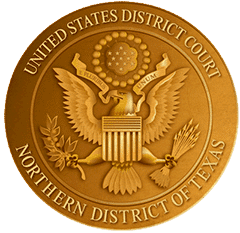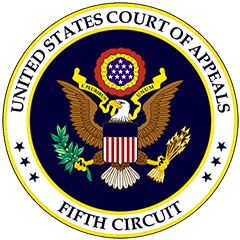When dealing with personal injury claims, one of the most pressing questions claimants often ask is whether it’s possible for settlements to exceed the insurance policy limits. This question strikes at the heart of personal injury law and the dynamics of insurance settlements. For those navigating an already stressful situation after an accident, understanding the nuances of policy limits and the exceptions to them can be vital.
This blog will explore the concept of policy limits, explain the circumstances under which settlements can exceed those limits, provide real-life case examples, and offer actionable advice for both claimants and insurance companies. By the end, you’ll have a clearer understanding of how policy limits influence settlements and what steps to take if you’re facing such a scenario.
What Are Policy Limits?
To grasp how settlements operate, it’s essential to first understand what insurance policy limits mean. Policy limits refer to the maximum amount an insurance company agrees to pay for a claim under a specific policy. These limits are pre-determined when the insurance policy is purchased, and they can vary widely depending on the type of policy and level of coverage.
For example, in an auto insurance policy, the liability coverage may have two limits listed as “per person” and “per accident.” For instance:
- $100,000 per person for bodily injury.
- $300,000 per accident for total injuries.
This means if one person is injured, the insurance will cover up to $100,000 for their damages. However, if multiple people are injured, the total payout across all claimants cannot exceed $300,000 per accident.
How Policy Limits Affect Settlements
Policy limits often act as a ceiling for insurance companies when negotiating claim settlements. This can sometimes leave a gap between the compensation a claimant seeks and what the insurer is willing to pay. These limits are particularly significant in cases involving severe injuries that result in substantial medical bills, lost wages, and pain and suffering.
Can Settlements Exceed Policy Limits?
Yes, there are situations where settlements exceed the policy limits. While uncommon, they do happen under specific circumstances. Here’s how:
1. Personal Assets of the Insured
If the amount claimed in a lawsuit surpasses the defendant’s insurance policy limits, the injured party may pursue additional compensation directly from the at-fault party’s personal assets. For instance, if you win a judgment for $500,000 but the insurance policy only covers $300,000, you could seek the remaining $200,000 from the defendant’s personal assets.
2. Bad Faith by the Insurer
Insurance companies have a legal obligation to handle claims in good faith. If a company’s refusal to settle within the policy limits exposes their policyholder to excess liability, they can be found guilty of acting in bad faith. This can result in them being required to pay the amount exceeding the policy limits, as demonstrated in several high-profile cases.
3. Additional Insurance Coverage
Some individuals or businesses may have multiple insurance policies or umbrella insurance. For example, an umbrella policy provides additional liability coverage beyond the limits of the primary policy. This allows claimants to access additional funds when settlements exceed the initial policy limits.
4. Structured Settlements
While not strictly related to exceeding policy limits, structured settlements might allow parties to negotiate an arrangement where the total payout exceeds the policy limits over time.
Factors Influencing Settlement Amounts
Several factors can determine whether a settlement exceeds the policy limits, including:
- Severity of the Injuries: Severe or life-altering injuries, such as brain trauma or paralysis, often result in higher settlement demands.
- Evidence of Negligence: The clearer the evidence of the defendant’s negligence, the stronger a claimant’s case for pushing beyond policy limits.
- Insurance Company’s Conduct: Any bad faith actions by the insurer can open the door for higher payouts.
- Victim’s Economic and Non-Economic Losses: Substantial medical expenses, lost earnings, and intangible damages (e.g., pain and suffering) often contribute to higher settlement demands.
Real-life Cases Where Settlements Exceeded Policy Limits
Understanding real-life precedents can provide critical insight into how these scenarios play out. Here are two notable cases:
Case 1: Bad Faith Lawsuit Leads to Extra Compensation
In a recent case, an insurance company refused to settle a claim for $250,000, the policy limit, after a serious car accident. The injured party sued and proved the insurer acted in bad faith by neglecting to negotiate in good faith. The court awarded the injured party $1.2 million—well above the policy limit.
Case 2: Personal Assets Supplement Coverage
A defendant’s auto accident caused catastrophic injuries to the claimant, and the damages far exceeded the liability policy’s $100,000 limit. The injured party pursued the defendant’s personal assets, successfully collecting an additional $200,000, which covered their remaining hospital bills and rehabilitation costs.
These cases reveal that while policy limits create challenges, claimants aren’t always constrained by them when pursuing rightful compensation.
Steps to Navigate Settlements Over Policy Limits
Whether you’re a personal injury victim or an insurance company, navigating settlements that exceed policy limits requires strategic planning. Here’s how:
For Claimants:
- Consult an Experienced Attorney: If your damages exceed the defendant’s policy limits, explore your options for pursuing additional compensation.
- Investigate Additional Assets: Work with your lawyer to identify personal assets or other sources of insurance coverage that could cover the shortfall.
- Document Everything: Gather evidence of your injuries, expenses, and the impact on your life. This is critical for negotiating with insurers and presenting your case in court.
For Insurance Companies:
- Assess Settlements Carefully: Evaluate the risk of exposure beyond policy limits and consider settling early when liability is clear.
- Act in Good Faith: Always negotiate within the policyholder’s best interests to avoid bad faith allegations.
- Communicate Clearly: Ensure transparency with both claimants and policyholders during settlement discussions.
Protecting Yourself and Understanding the System
Settlements exceeding policy limits represent rare but impactful cases in personal injury law. For claimants, they highlight the importance of exploring all avenues to secure adequate compensation. For insurance companies, they underscore the need for responsible and proactive claims handling.
Understanding these dynamics not only helps bridge the gap between expectations and reality but also equips all parties with the tools to protect their interests effectively. If you’re dealing with a complex personal injury case or need guidance on policy limit disputes, consult an experienced attorney or claims representative to ensure the best outcomes.





























